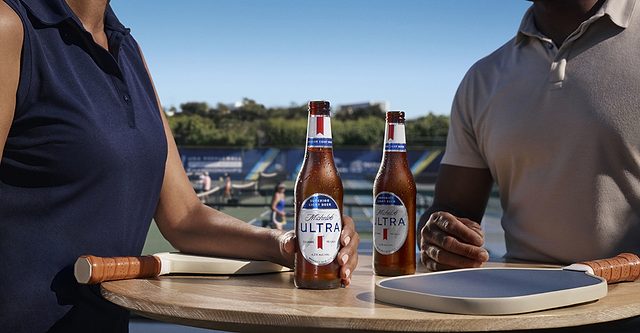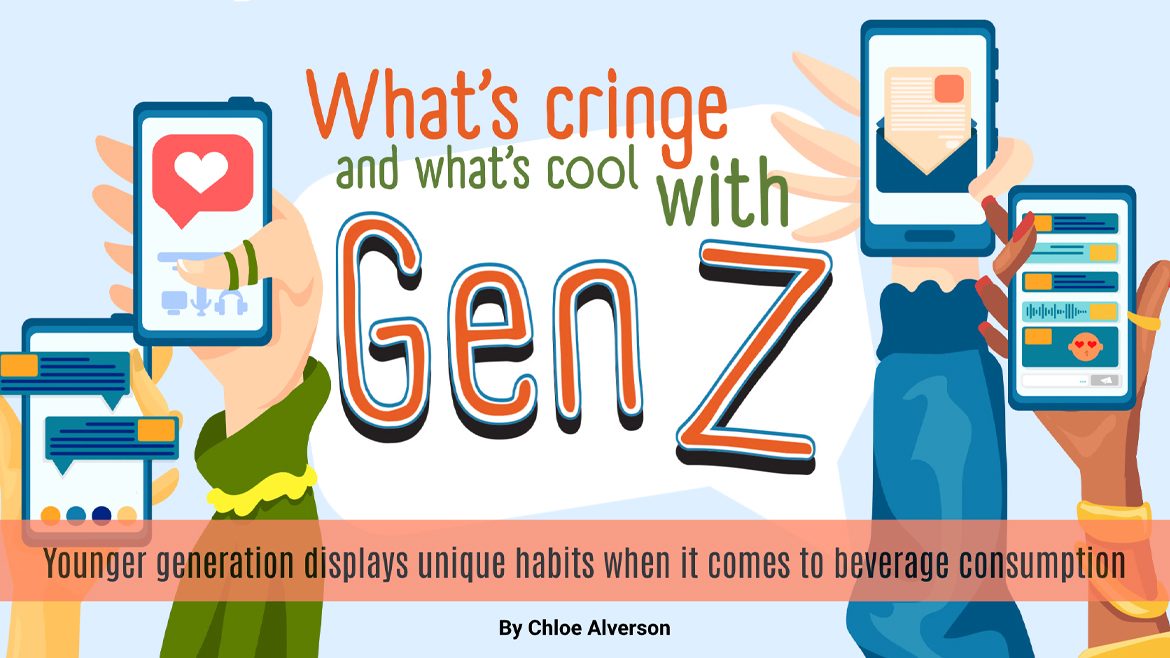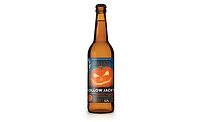2025 Beer Report: Beer looks to the high-end to recover
March 6, 2025
2025 Beer Report: Beer looks to the high-end to recover
March 6, 2025Image courtesy of Anheuser-Busch
Although beer still holds a strong share of the total beverage alcohol (TBA) market, data and research shows that the category has faced contraction in recent years. However, the key to turning its fortunes around might stem from the higher-end offerings.
“Looking back at 2024, the beer category was down slightly ― -0.6% dollar sales change vs. [year ago] (YA) ― but did not decline as much as total wine, which saw -2.2% dollar sales decline vs. 2023,” says Christal Torres, senior manager of client insights at Chicago-based Circana. “Spirits were a bright spot in the industry at plus 2.8% dollar sales vs. YA driven by premixed cocktails and seltzers. While the beer category is down 0.1 share of TBA, it still represents a healthy share of TBA.”

Ryan Toenies, senior director of client insights at Circana, notes that factors impacting beers performance include engaging with the coming-of-age legal drinking age (LDA) consumers as well as competition from the growing ready-to-drink alcohol space.
“With household penetration dropping over time for beer and TBA it will be important for beer to remain relevant with young consumers as they come of legal drinking age,” he says. “Connection with younger consumers is happening with innovation in [flavored malt beverages] (FMB) and [non-alcohol] (NA) beer. The import segment specifically Mexican imports continue to grow and are doing well with younger LDA consumers.”
Brian Sudano, CEO at S&D Insights LLC, Norwalk, Conn., also calls attention to competitive markets, but notes additional factors.
“Macro challenges from negative alcohol PR, diet drugs associated with doctor recommendations to stop drinking to extend life, cannabis and RTD spirits are impacting beer,” he says.
In a November 2024 insights from IWSR titled “Beer premiumisation trends in the US,” the market research firm also points to a variety of influences for why U.S. beer sales have struggled recently.
Looking for a reprint of this article?
From high-res PDFs to custom plaques, order your copy today!
“The challenges facing the beer industry in the U.S. stem from a number of factors. While no single factor stands out as the primary cause, most of them have generally pushed the category in a negative direction,” stated Marten Lodewijks, president of IWSR’s US Division, in the insights. “It’s challenging to make definitive conclusions about beer performance at the state level, as each state has unique dynamics. However, in general, states that performed better tended to experience stronger growth within higher price tiers.”
Top total domestic beers (Brand family)
*Includes brands not listed.
Source: Circana, Chicago. Total U.S. multi-outlets (grocery, drug, mass
merchandisers, convenience, military commissaries, and select club and dollar
retail chains) for the 52 weeks ending Jan. 26, 2025.
S&D Insights’ Sudano also notes that continued growth of the high-end has benefited the overall U.S. beer market.
“The emergence of craft brewers such as New Belgium and Sierra Nevada, becoming national more mainstream players providing another growth brewer to the mix,” he says. “Constellation, FMBs and non-alcoholic beer continued momentum also driving overall category. Michelob Ultra is also accelerating as it addressed the active lifestyle position.”
Circana’s Toenies also highlights non-alcohol beer and imports as growth contributors to beer and that retailers are adjusting their shelf space to accommodate those shifts.
“Retailers are shifting shelf-space and promotional support to segments that have been generating growth for the beer category (imports, FMB and NA beer),” he says. “This along with innovating in the right areas beer can gain share back.”
Yet, these all come as the beer category sees increased competition from RTD alcohol.
“The expanding acceptance of RTD sprits has put pressure on traditional spirits,” S&D Insights’ Sudano says. “As a result, traditional spirits are lagging. As FMBs and RTDs are becoming part of brewer and beer distributor portfolios, it is providing an overall tailwind to these players.
“We believe the market should view RTD spirits and FMBs separate from beer as an alternative beverage alcohol segment,” he continues. “This segment is growing and since they are an important part of the beer ecosystem, beer ecosystem in total has tailwind. If excluded, they are a headwind. However, increased investment by major brewers behind leading brands are moderating these brand declines.”
Circana’s Toenies, meanwhile, says that although the excitement surrounding spirit-based RTDs impacted beer performance, it has begun to turnaround.
“While spirits-based RTD cocktails have caused some shifting from beer seltzers and FMBs, FMBs are growing and beer seltzers are starting to stabilize after their pandemic driven hyper growth in 2020 and 2021,” he says.
Eyes on super-premium
Comprised of four segments ― premium, super-premium, sub-premium and craft ― the domestic beer market is one of varied performance. Overall domestic beer sales have lagged, but have seen a bright spot from super-premium.
“The domestic beer market continues to decline,” S&D Insights’ Sudano says. “Within domestics, FMBs and non-alcoholic beer continue to grow. Certain brands have outperformed, e.g. Coors Banquet and Michelob Ultra while overall light beer declines have moderated slightly. However, overall the market continues to lag.”
In IWSR’s insights, the market research firm notes from January to August 2024 compared with 2023 that premium-and-above beer showed volume declined 1%, while the super-premium segment grew by 4%.
“Super-premium beer has been growing by high-single digits in the U.S.’s Top 5 beer markets of California, Texas, Florida, New York and Illinois, and is helping to soften some of the declines in Standard beer,” IWSR’s Insights says. “Double-digit growth was seen in many states including Nevada, Indiana, Texas and Maryland.”
Circana’s Torres, further calls attention to super-premium’s dollar sales compared with its counter-parts.
“Domestic super-premiums had strong growth in 2024 at plus 2.1% dollar sales vs. YA,” she says. “Domestic premium and sub-premium segments struggled to gain momentum at -5.5% and -0.4%, respectively.”
Yet, affordability of premium-plus beer appeals to consumers who seek a cheaper alternative to spirits and other drink categories, the IWSR insights says.
“Consumers still get a sense of premiumization while spending less out-of-pocket for a premium beer versus a premium wine or spirit,” Lodewjiks stated in the insights.
However, domestic beers’ most dominant varietal ― light beer ― has had its challenges this past year.
“Market trends have bifurcated between more flavorful brands (some craft and FMB’s) and non-alcoholic brands,” S&D Insights’ Sudano says. “Outside of Michelob Ultra, other light beer brands remain under pressure.”
Circana’s Torres also notes the recent declines of light beer, but calls attention to the positive performers.
“While light beer is showing [year-over-year] declines, with a three-year [compound annual growth rate] of -0.6%, there are some bright spots within the segment,” she says. “In 2024, Michelob Ultra was plus $139 million, plus 4% dollar sales vs. YA, Busch was plus $95.8 million, plus 7.5%, and Yuengling increased plus $17.2 million, plus 25.4%.”
As domestic beer looks to rebuild whether through sessionability, affordability or super-premium, brands are looking at a host of ways to accomplish that.
S&D Insights’ Sudano says that in order to overcome challenges, expect to see “increased marketing investment and leaning into leading large brands. Although some brands are growing, many of the larger players are focused in other categories via innovation.”









